
Horror is a film genre that seeks to elicit fear or disgust in its audience for entertainment purposes.
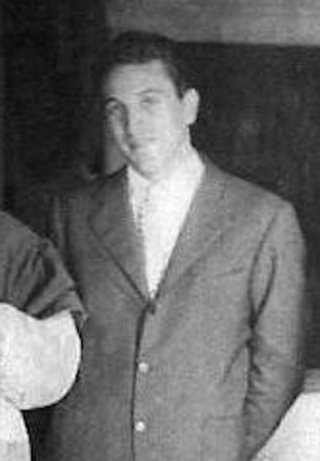
Antonio Margheriti, also known under the pseudonyms Anthony M. Dawson and Antony Daisies, was an Italian filmmaker. Margheriti worked in many different genres in the Italian film industry, and was known for his sometimes derivative but often stylish and entertaining science fiction, sword and sandal, horror/giallo, Eurospy, Spaghetti Western, Vietnam War and action movies that were released to a wide international audience. He died in 2002.

Anthony George Franciosa was an American actor most often billed as Tony Franciosa at the height of his career. He began his career on stage and made a breakthrough portraying the brother of the drug addict in the play A Hatful of Rain, which earned him a nomination for the Tony Award for Best Featured Actor in a Play. He reprised his role in its subsequent film adaptation, for which he won the 1957 Venice Film Festival Award for Best Actor, and was nominated for the Academy Award for Best Actor in a Leading Role.
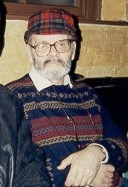
Lucio Fulci was an Italian film director, screenwriter, and actor. Although he worked in a wide array of genres through a career spanning nearly five decades, including comedies and spaghetti Westerns, he garnered an international cult following for his giallo and horror films.
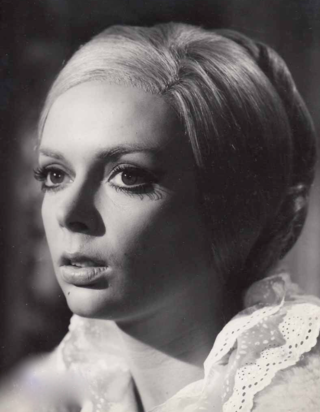
Barbara Steele is an English film actress known for starring in Italian gothic horror films of the 1960s. She has been referred to as the "Queen of All Scream Queens" and "Britain's first lady of horror". She played the dual role of Asa and Katia Vajda in Mario Bava's landmark film Black Sunday (1960), and starred in The Pit and the Pendulum (1961), The Horrible Dr. Hichcock (1962), The Long Hair of Death (1964), and Castle of Blood (1964).

Nosferatu the Vampyre is a 1979 horror film written and directed by Werner Herzog. It is set primarily in 19th-century Wismar, Germany and Transylvania, and was conceived as a stylistic remake of F. W. Murnau's 1922 German Dracula adaptation Nosferatu. The picture stars Klaus Kinski as Count Dracula, Isabelle Adjani as Lucy Harker, Bruno Ganz as Jonathan Harker, and French artist-writer Roland Topor as Renfield. There are two different versions of the film, one in which the actors speak English, and one in which they speak German.

Castle of Blood is a 1964 horror film directed by Antonio Margheriti and Sergio Corbucci. The film stars Barbara Steele, Arturo Dominici and Georges Rivière. The film was initially commissioned to director Sergio Corbucci, who had Gianni Grimaldi and Bruno Corbucci set to write the film. A scheduling conflict led to Corbucci's friend Margheriti being hired to complete the film. To avoid going over time, Corbucci was brought in to film one scene.

Vampire in Venice, also known as Prince of the Night and Nosferatu in Venice is a 1988 Italian supernatural horror film directed by Augusto Caminito and an uncredited Klaus Kinski, and starring Kinski, Christopher Plummer, Donald Pleasence, and Barbara De Rossi. The story follows Professor Paris Catalano (Plummer), who travels to Venice following the trail of the last known appearance of Nosferatu (Kinski), who was seen at Carnival in 1786. Catalano learns through a séance that the vampire is seeking eternal death, and tries to put an end to its existence once and for all.

I Vampiri is a 1957 Italian horror film directed by Riccardo Freda and completed by the film's cinematographer, Mario Bava. It stars Gianna Maria Canale, Carlo D'Angelo and Dario Michaelis. The film is about a series of murders on young women who are found with their blood drained. The newspapers report on a killer known as the Vampire, which prompts young journalist Pierre Lantin to research the crimes. Lantin investigates the mysterious Du Grand family who lives in a castle occupied by Gisele Du Grand who is in love with Lantin. She lives with her aunt, who hides her face in a veil, as well as the scientist Julian Du Grand, who is trying to find the secret to eternal youth.
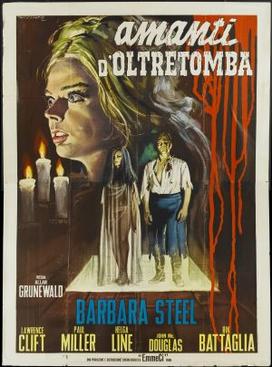
Nightmare Castle is a 1965 Italian horror film directed by Mario Caiano. The film stars Paul Muller, Helga Liné and Barbara Steele in a dual role.
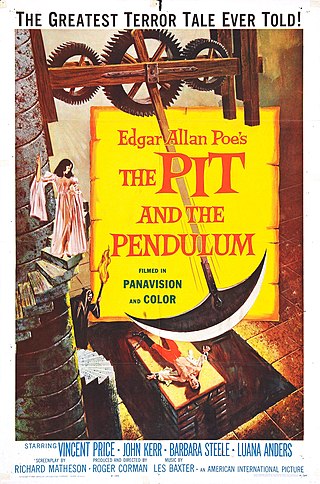
The Pit and the Pendulum is a 1961 horror film directed by Roger Corman, starring Vincent Price, Barbara Steele, John Kerr, and Luana Anders. The screenplay by Richard Matheson was loosely inspired by Edgar Allan Poe's 1842 short story of the same name. Set in sixteenth-century Spain, the story is about a young Englishman who visits a forbidding castle to investigate his sister's mysterious death. After a series of horrific revelations, apparently ghostly appearances and violent deaths, the young man becomes strapped to the titular torture device by his lunatic brother-in-law during the film's climactic sequence.

Poliziotteschi constitute a subgenre of crime and action films that emerged in Italy in the late 1960s and reached the height of their popularity in the 1970s. They are also known as polizieschi all'italiana, Euro-crime, Italo-crime, spaghetti crime films, or simply Italian crime films. Influenced by both 1970s French crime films and gritty 1960s and 1970s American cop films and vigilante films, poliziotteschi films were made amidst an atmosphere of socio-political turmoil in Italy known as Years of Lead and increasing Italian crime rates. The films generally featured graphic and brutal violence, organized crime, car chases, vigilantism, heists, gunfights, and corruption up to the highest levels. The protagonists were generally tough working class loners, willing to act outside a corrupt or overly bureaucratic system.

Edgar Allan Poe has appeared in popular culture as a character in books, comics, film, and other media. Besides his works, the legend of Poe himself has fascinated people for generations. His appearances in popular culture often envision him as a sort of "mad genius" or "tormented artist", exploiting his personal struggles. Many depictions of Poe interweave elements of his life with his works, in part due to Poe's frequent use of first-person narrators, suggesting an erroneous assumption that Poe and his characters are identical.

Luigi Cozzi is an Italian film director and screenwriter. At a young age, Cozzi became a fan of science fiction and began his career as an overseas correspondent for Western film magazines. After directing his first film The Tunnel Under the World, Cozzi befriended director Dario Argento and began working with him in film and television as well as directing his own features including Hercules as well as continuing work with Argento. In the 2010s, he returned to directing with the film Blood on Méliès' Moon.

And God Said to Cain is a 1970 gothic horror Spaghetti Western film directed by Antonio Margheriti and starring Klaus Kinski.
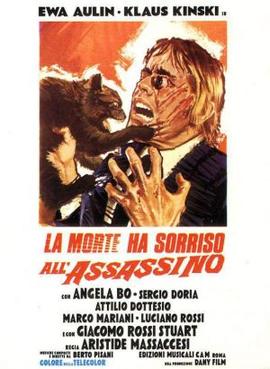
Death Smiles on a Murderer is a 1973 Italian horror film directed by Joe D'Amato and starring Ewa Aulin, Klaus Kinski and Luciano Rossi.
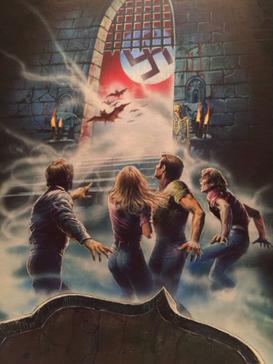
Sodoma's Ghost is an Italian direct-to-video horror film directed by Lucio Fulci.

Silvano Tranquilli was an Italian stage, television and film actor.

The Blood Demon, also known as The Torture Chamber of Dr. Sadism, The Snake Pit and the Pendulum, and Castle of the Walking Dead, is a 1967 West German horror film directed by Harald Reinl and starring Christopher Lee, Karin Dor, and Lex Barker.

The history of horror films was described by author Siegbert Solomon Prawer as difficult to read as a linear historical path, with the genre changing throughout the decades, based on the state of cinema, audience tastes and contemporary world events.




















